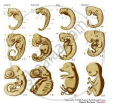Advertisements
Advertisements
प्रश्न
What are vestigial organs?
What are vestigial organs? Give one example.
उत्तर १
Vestigial organs:
Vestigial organs are the organs which are non-functional in some organisms but may have essential functions in other organisms.
उत्तर २
Vestigial organs are structures which have no apparent function in a particular organism. Examples: Tailbone, wisdom teeth
APPEARS IN
संबंधित प्रश्न
Give two examples of vestigial organs in human beings and plants.
(a) Select the homologous structures from the combinations given below:
(i) Forelimbs of whales and bats
(ii) Tuber of potato and sweet potato
(iii) Eyes of octopus and mammals
(iv) Thorns of Bougainvillea and tendrils of Cucurbita
(b) State the kind of evolution they represent.
Explain with an example for the given, how the following provides evidence in favor of evolution in organisms :
Homologous organs
Which of the following pairs of two vegetables represent the correct homologous structures?
(A) Sweet potato and potato
(B) Sweet potato and tomato
(C) Carrot and potato
(D) Radish and carrot
Differentiate between analogy and homology giving one example each of plant and animal respectively.
Can the wing of a butterfly and the wing of a bat be considered homologous organs? Why or why not?
Find out from newspapers and popular science articles any new fossil discoveries or controversies about evolution.
Explain with an example for the given, how the following provides evidence in favor of evolution in organisms :
Fossils
Explain the evolution of giraffe's neck according to Lamarck's theory of evolution.
Select and write analogous structures from the list given below :
1) Wings of butterfly and birds
2) Vertebrate hearts
3) Tendrils of Bougainvillea and Cucurbita
4) Tubers of sweet potato and potato
The organs which perform similar functions but have different basic structure are called :
(a) asymmetric organs
(b) analogous organs
(c) homologous organs
(d) homophonic organs
Wing of an insect and forelimb of a bird are :
(a) analogous organs
(b) analeptic organs
(c) homologous
(d) homophobic organs
The presence of which of the following types of organs in two animals indicates that they are not derived from a common ancestor?
(a) homologous organs
(b) excretory organs
(c) analogous organs
(d) reproductive organs
The presence of which of the following types of organs in two organisms indicates that they are derived from the same ancestor?
(a) analogous organs
(b) respiratory organs
(c) digestive organs
(d) homologous organs
Select a set of homologous organs from the following:
(A) Wings of a bat and wings of a butterfly
(B) Wings of a pigeon and wings of a bat
(C) Wings of a butterfly and wings of a pigeon
(D) Forelimbs of a duck, forelimbs of a cow and forelimbs of a lizard
Observe the picture and answer the following questions.
A) Which evidence of evolution is shown in the picture?
B) What can be proven with this proof?
C) Give one more example of evidence of evolution
Answer the following question:
What are homologous structures? Give an example. Is it necessary that homologous structures always have a common ancestor? Justify your answer.
Short answer question.
Give the significance of fossils.
Give scientific reason.
Duck-billed platypus shows relationship with mammals.
Enlist the evidences of evolution.
A human hand, a front leg of a cat, a front flipper of a whale and a bat’s wing look dissimilar and adapted for different functions. What is the name given to these organs?
Select the CORRECT match.
- Define vestigial organs.
- Write names of any two vestigial organs in the human body.
- Write name of those animals in which these vestigial organs are functional.
Why do all the gametes formed in human females have an X chromosome?
Evolution has exhibited a greater stability of molecular structure when compared with morphological structures. Comment on the statement and justify your opinion.
Study of fossils is ______.
The presence of gill slits, in the embryos of all vertebrates, supports the theory of ______.
Which is not a vestigial organ in a man?
Organs having similar functions but different origin and development are known as:
Animal husbandry and plant breeding programmes are the examples of ______.
Fossils are generally found in ______.
What were the characteristics of life forms that had been fossilised?
Did aquatic life forms get fossilised? If, yes where do we come across such fossils?
How do we compute the age of a living tree?
The evolutionary story of moths in England during industrialisation reveals, that 'evolution is apparently reversible'. Clarify this statement.
As shown in figure below some organisms that share a common ancestor have features that have different functions, but similar structures.

These are known as ______. Give example.
Find the odd one out:
Industrial melanism was highlighted by ______.
Write names of some vestigial organs in the human body.
